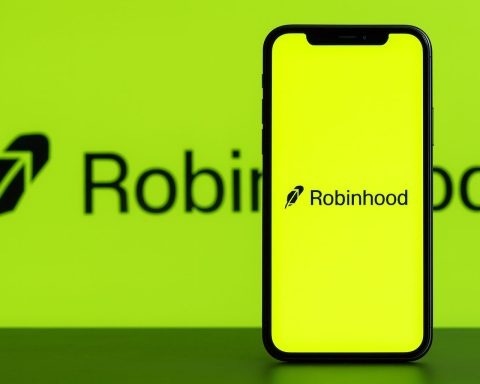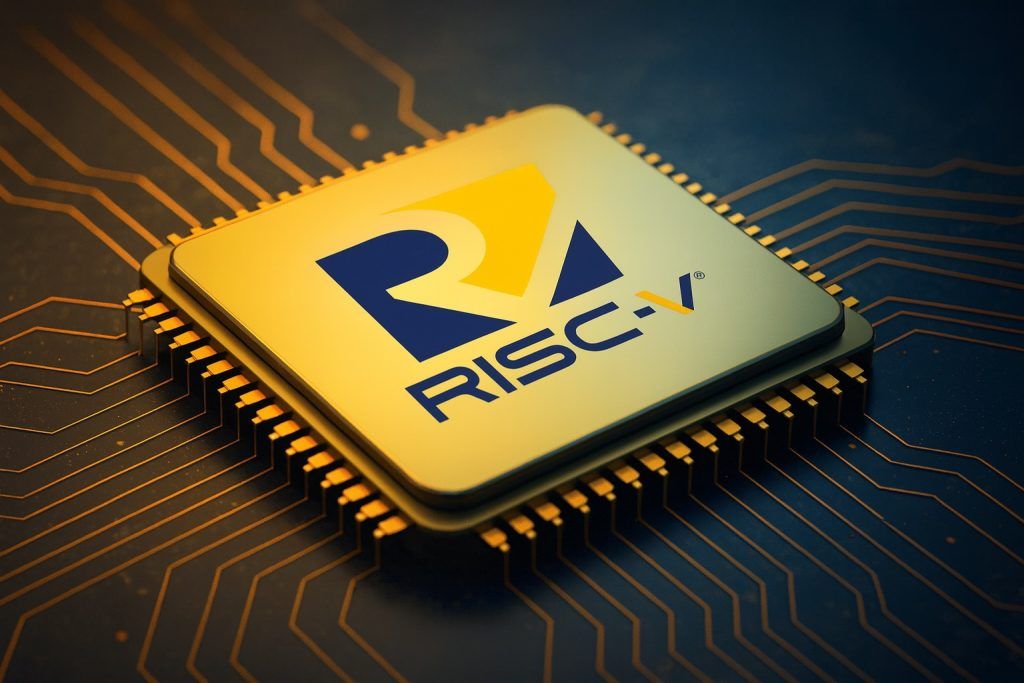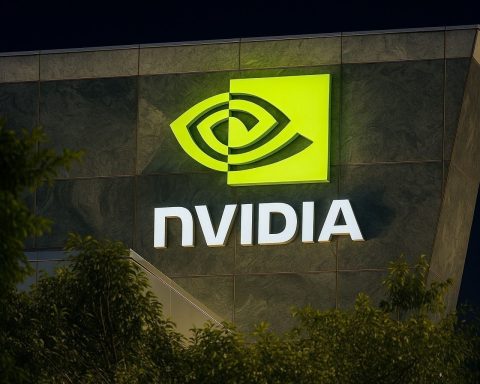Key Facts & Takeaways
- LLMOps Market Soars: The global LLMOps software market was valued at $4.35 billion in 2023 and is projected to reach $13.95 billion by 2030 (21.3% CAGR) [1]. Enterprise LLM spend more than doubled in six months, surging from $3.5B in late 2024 to $8.4B by mid-2025 as AI workloads move into full production [2] [3]. Major cloud providers (OpenAI, Anthropic, Google) dominate enterprise LLM usage, with Anthropic now leading at 32% market share [4].
- Stack Layer Spending Trends:Foundation models & infrastructure claim the lion’s share of investment, driven by costly GPU compute for training and inference. Model/API providers saw the largest funding influx after ChatGPT’s debut [5]. Enterprises often spend $450K+ per month on cloud infrastructure for LLM inference, comprising up to 60–70% of total AI project costs [6]. The orchestration & deployment layer (tools for prompt management, routing, fine-tuning) and evaluation & observability layer (monitoring, testing, guardrails) are emerging as critical spend areas, evidenced by record investments like Arize AI’s $70M Series C for LLM observability [7] [8].
- Enterprise Adoption at Tipping Point: Generative AI has graduated from pilot to production across industries. 78% of businesses reported using AI last year (up 55% YoY) [9], and 60% of CIOs expect to have GenAI in production by end of 2025 [10]. Venture funding for “agentic AI” startups (which build autonomous AI agents) hit $2.8B in H1 2025 and is projected to reach $6.7B (10% of all AI funding) in 2025 [11] [12]. As Prosus CEO Fabricio Bloisi observes, “We are past the tipping point of AI agent adoption and it is now firmly rooted in the workplace”, with AI agents set to become digital coworkers across enterprise functions [13].
- Use Cases and Industry Uptake: Early enterprise LLMOps use cases span software development (coding assistants), customer service (chatbots), knowledge management, and RPA. Code generation emerged as the first killer app – Anthropic’s Claude captured 42% of the code-gen market, doubling OpenAI’s share [14]. In agentic AI, customer support and healthcare platforms are the most funded application areas, while coding agents (e.g. Cursor) have achieved rapid product-market fit [15]. Companies are moving beyond toy examples to mission-critical deployments: “Our large enterprise customers are beyond the proof-of-concept phase… looking at ways to scale to mission-critical deployments,” notes Anand Nimkar of Deloitte [16]. This broad adoption is driving AI spend into core IT budgets (only 7% of LLM spend is from innovation labs now, down from 25% last year) [17].
- Pricing Models Evolve: Leading LLMOps and AI platform providers employ usage-based pricing, tiered SaaS plans, or hybrid models. Cloud AI APIs are largely pay-as-you-go – for example, OpenAI’s GPT-4 charges ~$30 per million input tokens and $60 per million output tokens, so developers “pay only for what they use” [18]. Many platforms offer free trials or free tiers, then tiered plans (e.g. managed LLMOps tools like Flowise start around $35–$65/month for pro plans, with custom enterprise pricing) [19]. Some enterprise platforms combine a platform subscription with usage fees or offer on-prem licensing for a flat fee. Overall, usage-based billing dominates for model access, while end-to-end platforms layer in tiered subscriptions for advanced features, support, and compliance.
- Rapid Time-to-Production: The cycle from AI pilot to production deployment is compressing dramatically. In 2023, teams often spent months on GenAI pilots; now “what I spent in 2023 I now spend in a week,” one CIO quipped of their accelerated rollout [20]. A16Z’s 2025 CIO survey found enterprises expecting ~75% YoY growth in GenAI budgets as projects move swiftly from proof of concept to live products [21]. Modern LLMOps stacks (with robust prompt versioning, CI/CD, and reusable agents) help cut deployment timelines “from weeks to days” [22]. Still, scaling beyond a prototype can introduce delays – one study noted time-to-production stretches ~37% longer when going from POC to full-scale deployment due to integration and performance hurdles [23]. Vendors are responding with tools to slash friction: Microsoft reports some developers cut AI deployment time by 80% by leveraging pre-built models and marketplaces [24]. The push for faster AI time-to-value is intensifying competition in LLMOps tooling.
- Q3 2025: New Platforms & Innovations: The past quarter saw a flurry of LLMOps and agent platform launches. In August, C3.ai unveiled “C3 Agentic AI Websites,” an AI agent that instantly turns any website into an intelligent, conversational assistant [25] [26]. This tool, powered by generative models, delivers real-time answers to site visitors in a brand’s tone, aiming to boost engagement and conversions. Meanwhile, Akka (formerly Lightbend) introduced the Akka Agentic Platform, partnering with Deloitte to help enterprises deploy large-scale autonomous agent systems [27] [28]. “Agentic AI has become a priority with enterprises… a new model that will unlock trillions of dollars of growth,” says Akka CEO Tyler Jewell, highlighting the need to address cost, scale, and reliability for always-on AI agents [29]. Foundation model providers are also racing forward – Anthropic’s Claude 4 and OpenAI’s latest GPT-4.1/GPT-5 models (with tool-use capabilities) rolled out in 2025, enabling what Menlo Ventures calls “agent-first” AI. Indeed, 2025 is being hailed as “the year of agents,” as LLMs evolve to handle multi-step reasoning and tool integration rather than single-turn prompts [30].
Market Spend by Stack Layer: From Data to Deployment
The LLMOps ecosystem can be viewed in stack layers – from the infrastructure and data foundations up through model orchestration and finally evaluation/monitoring. Each layer is attracting significant investment as enterprises build out end-to-end GenAI capabilities:
- Infrastructure & Data Layer: This bottom layer encompasses the compute hardware, cloud services, and data pipelines needed to train and run large language models. It also includes data management (from raw text corpora to vector databases for embeddings). Currently, this layer commands the majority of spend in LLM projects. Running state-of-the-art LLMs is resource-intensive – companies frequently report hundreds of thousands of dollars in monthly GPU cloud costs for production workloads [31]. In fact, for many deployments, cloud compute for LLM inference makes up ~60%–70% of total AI TCO (Total Cost of Ownership) [32]. Market data underscores this trend: enterprise AI infrastructure budgets are expanding (59% of organizations planned to increase AI infra spend in a recent survey) [33]. Hyperscalers like Microsoft, Google, and AWS have invested billions in AI-optimized data centers (e.g. Microsoft earmarked $80B for AI datacenters) [34]. Funding flows heavily into this layer, especially to foundation model providers. Ensemble VC’s analysis of 2015–2025 funding found the “Model Layer” companies (foundation model vendors like OpenAI, Anthropic) drew the largest share of capital, surpassing data tools and AI platforms [35]. This makes sense – building and hosting large models is extremely capital-intensive, but also seen as high-value, so investors have poured money into model-focused startups and cloud services. At the same time, data infrastructure remains critical. Quality data is the fuel for LLMs, so tools for data collection, labeling, and feature stores see healthy enterprise spend. For example, data-centric MLOps companies (Labelbox, Snorkel, Weaviate, etc.) are part of many LLM stacks [36] [37]. The recent shift toward synthetic data generation (models creating training data for other models) is spurring spend on data quality control as well [38] [39]. Overall, the infra/data layer is where enterprises must invest upfront to enable any LLM application – whether via cloud GPU rentals, on-prem AI servers for sensitive data, or large-scale data engineering.
- Orchestration & Deployment Layer: Above the raw infrastructure sits the tooling to deploy, integrate, and manage LLMs in applications. This includes model orchestration frameworks, prompt engineering tools, and deployment platforms that handle environment setup, scaling, and security. As LLMOps emerged, new platforms arose to connect all the pieces: e.g. LangChain and Transformers Agents for chaining model calls, LLMOps platforms like Humanloop, LangSmith, and Vellum for experiment management [40] [41], and MLOps veterans (Databricks, Weights & Biases) extending into LLM support [42]. Spending in this middle layer is growing rapidly as companies realize that “the old MLOps playbook doesn’t apply” to LLMs [43]. Unlike traditional ML, LLM applications involve dynamic prompts, continual model updates, and complex tool integration. Therefore, organizations are investing in tools that provide versioning for prompts, routing across multiple models, and continuous deployment pipelines tailored to LLMs [44] [45]. The goal is to avoid vendor lock-in and maximize performance per dollar by “mixing and matching multiple models” in production [46] [47]. Indeed, 37% of enterprises are now running 5 or more different LLMs in production workloads, selecting the best model per use case (OpenAI vs Anthropic vs open-source, etc.) [48] [49]. Key spend areas here include prompt management systems, which treat prompts as version-controlled assets, and LLM deployment platforms that handle serving models at scale (with features like caching, request routing, and autoscaling). For instance, model routing “gateways” (like Portkey or Nvidia’s NeMo) let teams switch between model APIs or even swap in fine-tuned local models without changing application code [50] [51]. Many enterprises are also deploying vector databases (Pinecone, Chroma) to enable retrieval-augmented generation, which bridges LLMs with enterprise knowledge bases [52] [53]. All these tools fall under the orchestration umbrella, ensuring LLMs are integrated reliably into products. Notably, agent frameworks are a fast-emerging part of this layer. As 2025 is dubbed “the year of agents” [54], platforms for orchestrating autonomous agents (which plan multi-step workflows and call tools) are gaining traction. Companies like Relevance AI, Microsoft (Autogen), and Cognosys offer agent orchestration platforms aimed at enterprise use [55] [56]. Venture capital is responding: funding for agentic AI platforms is expected to reach $6.7B in 2025 as mentioned, indicating that this orchestration sub-sector will see significant spend [57]. In short, after paying for raw model access, enterprises are paying for the “glue” that operationalizes those models.
- Evaluation & Observability Layer: The top layer is all about making LLMs reliable, safe, and performant in real-world use. This includes tools for monitoring model outputs, detecting errors or drifts, evaluating quality, and enforcing guardrails (safety, compliance). As LLM applications mature, this layer is becoming indispensable – and budgets are following. Industry experts emphasize that while it’s “easy to build an AI demo, making it work in the real world is the hard part”, requiring rigorous testing and monitoring [58]. We see rising spend on AI observability platforms like Arize, WhyLabs, and Monte Carlo, which provide a “single pane of glass” for tracking LLM performance in production. In fact, Arize AI’s $70M round in Feb 2025 was the largest-ever investment in AI observability, earmarked specifically for LLM and AI agent monitoring [59] [60]. These tools let engineers trace model decisions, analyze errors, and get alerts if an LLM starts hallucinating or producing toxic outputs. Similarly, evaluation frameworks are drawing attention. Companies are now allocating budget to systematically evaluate LLMs via human feedback and automated benchmarks. For example, OpenAI and others host “evals” to rate model performance on tasks, and startups like LlamaIndex and LangSmith partner on evaluation suites [61]. When enterprises fine-tune or update a model, they need to ensure quality didn’t regress – hence built-in A/B testing and offline evaluation are considered essential LLMOps features [62] [63]. Observability and guardrail spend also tie into compliance. Highly regulated industries (finance, healthcare) are investing in “trust and safety” layers for their AI – e.g. filters to remove sensitive data or biased content from outputs, and audit logging of every AI interaction [64] [65]. The EU’s forthcoming AI Act is expected to further drive spending on explainability and monitoring tools, since 40% of some EU AI budgets are being redirected to compliance tech [66]. In summary, LLMOps spending is expanding from the bottom of the stack upward: first on core model APIs and GPUs, then on the plumbing to deploy those models, and now increasingly on the oversight and improvement of model performance. This layered view is somewhat fluid (many vendors offer features across layers), but it’s clear that organizations must budget across the stack. As Ensemble VC puts it, every layer – “compute, data, model deployment, security” – is a frontier requiring investment [67] [68]. The winners in LLMOps will be those that unify these layers or at least integrate them smoothly, so enterprises can manage LLMs from training data to monitoring in one flow.
Enterprise Adoption Trends and Use Cases Across Industries
Enterprise adoption of large language models and AI agents has accelerated dramatically in the past 18 months, cutting across virtually every sector. Where are companies actually deploying LLMs, and to what end? A few key trends and use cases stand out:
- Generative AI moves from experiment to essential tool: Surveys show a majority of enterprises are now past the experimentation stage. The Stanford AI Index 2025 noted private investment in generative AI surged and business usage jumped 55% in a year, reaching 78% of companies using AI [69]. This aligns with anecdotal evidence: many Fortune 500 firms now have GenAI features in production (from internal assistants to customer-facing chatbots). AI budgets have consequently “graduated” into core IT spend – a16z found that only 7% of LLM spend is from innovation labs now, down from 25% in 2024, as AI becomes a line-item in products and operations [70].
- CIOs doubling down on AI despite economy: Enthusiasm at the C-suite level is high. In Morgan Stanley’s 1Q’25 CIO survey, AI/ML was the #1 priority, deemed the “second most defensible” area of IT spend in a tight economy [71]. Enterprises expect rapid scale-up: on average CIOs foresaw ~75% budget growth for LLM projects in the next year [72], indicating that early successes are driving broader rollouts. One CTO noted that as more products add AI features, spending will rise “across all of these products” rather than being siloed [73]. In short, AI is becoming ubiquitous in enterprise software.
- Early use cases: coding, content, and customer service lead: Certain applications of LLMs achieved product-market fit early and have been widely adopted:
- Software Development (AI coding assistants): Engineering organizations were quick to embrace LLM copilots. Code generation and code review assistants (GitHub Copilot, Replit’s Ghostwriter, etc.) are now common, boosting developer productivity. In fact, Menlo Ventures reports “code generation became AI’s first killer app” – by 2025, an ecosystem worth $1.9B had grown around AI coding tools [74]. Anthropic’s Claude, optimized for coding, took a commanding lead with 42% of usage in this domain [75]. Every major cloud now offers an AI pair programmer (AWS CodeWhisperer, Google’s Studio Bot), underscoring that coding assistants are a top enterprise use case for LLMs.
- Customer Service and Support: Nearly every industry is deploying AI chatbots for customer service, from banking to e-commerce. These range from simple FAQ bots to sophisticated agents that can troubleshoot issues. The Prosus/Dealroom report found customer service platforms are the most-funded agentic AI application area in 2025 [76]. Companies like Intercom, LivePerson, and Salesforce have launched GenAI-driven support assistants that handle large volumes of routine queries, escalating to humans when needed. The ROI is clear: AI agents working alongside human support reps can reduce response times and 24/7 availability at relatively low cost once deployed.
- Knowledge Management & Content Generation: Many enterprises use LLMs internally for knowledge management – e.g. an AI assistant that employees can query for company policies, research summaries, or data insights. Law firms use GPT-powered tools to summarize case law; consulting firms use them to generate report drafts. In media and marketing, generative models assist with copywriting, social media posts, and personalization. Industry-specific fine-tunes are emerging (e.g. BioGPT for medical texts, FinGPT for finance) to better serve those knowledge domains. This class of use case – summarization, search, report generation – is popular because it augments white-collar workflows without full autonomy, making it a low-risk starting point.
- Process Automation (Agents & RPA): A nascent but exciting trend is autonomous agents automating business processes. Traditional RPA (Robotic Process Automation) players like UiPath and Automation Anywhere are integrating LLMs to make bots smarter at handling unstructured data and exceptions [77]. Meanwhile, new startups build “AI agents” that can perform tasks like filling out forms, reading and replying to emails, or updating CRM records based on high-level goals. According to Prosus, “AI agent enablers” like RPA tools and agent-building platforms have outperformed other categories in funding within agentic AI [78]. For example, Adept AI has been developing an agent that can use software like a human would (clicking buttons, etc.), and enterprises see huge potential in offloading repetitive digital tasks to such agents.
- Industry-specific adoption patterns: While horizontal use cases exist, different sectors are leveraging LLMs in unique ways:
- Finance: Banks and insurers are cautiously embracing LLMs for things like fraud analysis (scanning transaction patterns), financial advice chatbots, and automating paperwork (e.g. parsing legal contracts or earnings reports). Compliance and risk are major concerns, so many financial firms are opting for on-premise LLM deployments. For instance, Morgan Stanley famously built a GPT-4 powered wealth management assistant but with proprietary data and guardrails. We see interest in analyst report generation, scenario simulation, and other decision support roles for AI in finance, albeit with human oversight.
- Healthcare: Healthcare providers use LLMs for summarizing patient visit notes, assisting in medical coding/billing, and even answering patient questions via triage chatbots. Large hospital systems are piloting AI scribes that listen in on doctor-patient conversations and produce clinical documentation automatically. The Prosus report noted healthcare-focused agentic platforms attracted significant funding [79], likely because automating routine admin work in hospitals is a huge opportunity. Privacy and accuracy are critical here; thus, custom fine-tuned models (trained on medical text) and thorough validation are standard. Still, the potential of LLMs to reduce administrative burden in healthcare is driving adoption (e.g. cutting hours of doctor paperwork).
- E-commerce & Retail: Retailers are embedding LLMs in shopping assistants and personalization engines. An AI agent that can guide customers to products, answer detailed questions (“Which laptop best meets my needs under $1,000?”), or generate tailored product descriptions is valuable. E-commerce companies also use LLMs for inventory and sales forecasting by analyzing large volumes of historical data. Additionally, marketing teams use generative AI for product ads, SEO content, and A/B testing copy variations. The retail sector values quick time-to-market and customer experience, so many have been early adopters of AI agents on websites (like the C3 Agentic AI Websites example, turning the site into an interactive salesperson [80] [81]).
- Manufacturing & Industrials: Here, LLM-driven agents are being trialed for operations and maintenance tasks. Think of an AI assistant that plant workers can query for troubleshooting machinery issues (“Why did machine X stop? What’s the fix?”) drawing on equipment manuals and sensor data. Some manufacturers use LLMs for supply chain optimization, generating insights from logistics data or coordinating scheduling (“agentic AI” coordinating between different factory systems). There’s also interest in training AI on large volumes of engineering documents to serve as a knowledgeable aid for engineers on the floor. These use cases are still emerging, often requiring integration with IoT and databases, but promise increased efficiency in industrial operations.
- The rise of AI “colleagues”: A particularly striking trend is the idea of AI agents as co-workers, not just tools. The Prosus report frames agentic AI as the third wave of AI (after predictive analytics and generative AI) and suggests we’ll soon have teams of digital colleagues working alongside humans [82] [83]. In fact, Prosus’ CEO announced plans to “hire the largest AI workforce in the industry this year, with AI agents working across our organization from HR to customer support” [84]. Enterprises are experimenting with AI agents assigned specific roles: an HR agent that automates parts of onboarding, or a finance agent that continuously analyzes expenditures for anomalies. This multi-agent workplace vision requires employees to manage and collaborate with AI—shifting human roles towards strategy, creativity, and oversight. We’re already seeing job titles like “AI Team Manager” or “Prompt Engineer” emerge as companies formalize these human-AI working relationships.
- Challenges tempering adoption: It’s not all smooth sailing – enterprises have hit some pain points in LLM adoption. One is the well-known issue of hallucinations and accuracy. LLMs sometimes fabricate answers, which is unacceptable in high-stakes domains. This has limited deployment in areas like legal or medical advice unless robust verification steps are in place. Data privacy is another blocker: industries like banking want to use LLMs but cannot send sensitive data to external APIs. This drives demand for on-prem or self-hosted models (hence cloud vendors offering on-prem versions and startups focusing on “sovereign AI” solutions). Integration with legacy systems is also difficult – 67% of finance/healthcare orgs reported needing custom connectors to plug AI into their old systems [85] [86]. Finally, the skills gap is real: over half of organizations said they lack skilled talent to implement and maintain AI, and hiring AI engineers can take 6–9 months [87]. These challenges mean some industries progress slower, or focus on low-risk use cases first.
Despite these hurdles, the overall trajectory is clear: enterprise LLM adoption is in full swing, with rapidly expanding use cases across the board. As one venture report concluded, “AI adoption continues to accelerate across industries”, and even in highly regulated fields, the question has shifted from “should we use AI?” to “how can we use AI responsibly and effectively right now?”*. The competitive pressure to leverage LLMs is mounting – companies see AI as both an opportunity and a necessity to stay ahead.
Notably, the center of gravity is shifting from single-use pilots to integrated, company-wide AI strategies. Organizations that initially dabbled with a chatbot here or a code assistant there are now developing platforms to deploy dozens of AI use cases securely. The concept of an “AI-first enterprise” – where AI agents and LLM-driven insights are woven into every process – is no longer theoretical. It’s happening in real time, one domain at a time, and those that fail to adapt risk falling behind more nimble, AI-powered competitors.
Pricing Models of Leading LLMOps & Agent Platforms
The business models underpinning LLMOps and AI agent platforms are still evolving, but a few dominant pricing strategies have emerged. Understanding these is key for enterprises budgeting their AI initiatives and for investors evaluating platform revenue potential. Here we break down common pricing models – usage-based, tiered SaaS, and hybrid approaches – with examples from leading platforms:
- Usage-Based Pricing (Pay-as-you-go): This model charges based on consumption, typically measured in API calls, tokens processed, or compute hours. It’s prevalent among foundation model providers and cloud AI services. OpenAI popularized usage-based pricing for LLMs – e.g. charging developers per 1,000 tokens of input/output. As a concrete example, “GPT-4 [was] $30 per million tokens for input and $60 per million for output” under OpenAI’s API in 2023 [88]. This equates to about $0.03 per 1K input tokens and $0.06 per 1K output tokens (roughly a few cents to process a typical paragraph). Usage-based pricing aligns cost to actual activity, which startups and developers appreciate: you only pay for the AI calls you actually make. It also scales naturally – projects that ramp up usage will generate more revenue for the provider. Nearly all major LLM API providers use this model: Anthropic, AI21, Cohere, Google Vertex AI, and Azure OpenAI all charge per token or per request, with rates varying by model size and speed. For instance, Google’s PaLM API and Azure’s GPT-4 service have similar per-token fees published, and open-source model hosting platforms (like Hugging Face Hub or Replicate) often charge per second of GPU inference time. Implications: Usage-based pricing makes entry cheap (many offer some free tier or credit), but costs can scale unpredictably. Enterprises sometimes get “sticker shock” when an app’s popularity causes a spike in token usage and thus a hefty bill. One mitigation is volume discounts or committed-use contracts – e.g. OpenAI and others offer lower rates at high volumes, or monthly spend commitments for enterprise deals. Nonetheless, pay-as-you-go remains the simplest and most flexible model, especially for the core model-as-a-service offerings.
- Tiered Subscription Pricing: Many LLMOps tool providers (especially SaaS startups) use tiered plans – e.g. Free, Pro, Enterprise – with fixed monthly or annual fees that unlock certain levels of usage or features. This is akin to traditional SaaS pricing. For example, a low-code LLMOps platform like Flowise offers a Starter plan around $35/month and a Pro plan around $65/month on their managed cloud, with an enterprise tier being custom-priced [89]. These plans usually cap the number of requests or users, and higher tiers include premium capabilities (collaboration features, higher API rate limits, priority support, better security/compliance features like SSO or SOC2). LangChain’s hosted services, Humanloop, Manifest, Baseten, and others follow a similar pattern – a developer can start for free or cheap, but a team or production deployment requires a paid tier. Tiered pricing works well for platforms that provide an integrated environment or value-added services on top of raw model APIs. For instance, prompt management or monitoring tools might charge by seats or by number of models monitored. These tiers often correspond to company size; e.g., a “Team” plan for a small startup versus an “Enterprise” plan (with custom pricing) for large companies. Weights & Biases (an MLOps platform adding LLMOps features) has this structure: free for individuals, then per-seat pricing for teams, and enterprise licenses for unlimited users and on-prem support. Implications: Tiered pricing provides predictability – a company knows it will pay, say, $5k/month for a certain platform regardless of exact usage (as long as it’s within fair use limits). It also encourages upsell: as the usage grows, vendors nudge customers to the next tier or to enterprise contracts. From the customer side, one must be mindful of what the tier includes; sometimes the lower tiers might limit critical features (for instance, some eval/monitoring tools only retain logs for 7 days on basic plans, versus 30+ days on higher plans).
- Hybrid Models (Subscription + Usage): Some companies blend the two approaches. A common hybrid is charging a platform fee or minimum spend, plus variable usage fees. For example, OpenAI’s enterprise deals reportedly involve a monthly platform fee that guarantees priority access and SLAs, on top of which token usage is billed. Another hybrid variant is charging per seat for the UI/platform and passing through model usage costs. Imagine an enterprise LLM platform that charges $100 per user for access to the app builder interface, but the customer also pays for any underlying model API calls either at cost or with a markup. Cloud providers also do hybrids: Microsoft Azure OpenAI charges for usage, but one must also have an Azure subscription (and potentially pay for dedicated instance hosting, etc., for certain private deployments). Similarly, Databricks (with its Dolly and MosaicML acquisition) might include LLM serving as part of its broader platform subscription, effectively bundling it. Another angle on hybrid is usage overage fees on top of tiers. For instance, a platform might include X number of API calls in the base subscription and then charge a metered rate for any usage beyond that. This is seen in some chatbot platform pricing where you get a certain quota of messages per month. Implications: Hybrid pricing aims to balance steady SaaS revenue with fair compensation for heavy usage. Enterprise software buyers often prefer a predictable flat fee for budgeting, but vendors need to account for variable infrastructure costs if one client uses 10× more resources than another. The compromise is a base fee (covering average use) plus overages for outliers.
- Free and Open-Source Tiers: It’s worth noting that in this competitive landscape, many LLMOps tools are open-sourcing core functionality or offering generous free tiers to drive adoption. For example, the Dify.ai platform is open-source (Apache 2.0) and free to self-host, monetizing via a hosted cloud with extra features [90] [91]. LangChain’s LangSmith and Haystack by Deepset have open-source versions for developers, creating community buy-in, and then enterprise offerings layered on top. This strategy forces purely commercial competitors to justify their cost with superior convenience or enterprise features. Likewise, open-source LLMs (Meta’s Llama 2, etc.) are “free” model checkpoints – though one must still pay for the compute to run them. Some enterprises attempt to reduce API costs by using open models on their own infrastructure (to avoid per-token fees). This can save money at scale, but introduces maintenance costs. The tug-of-war between open and proprietary will influence pricing: if open LLMs get good enough, proprietary API providers might need to adjust prices downward or offer more value. Menlo Ventures observed that open-source LLM adoption in enterprises actually fell to 13% in 2025 (from 19%), as closed models retained a quality edge [92]. Still, companies like Meta provide their models free – a form of “open-source pricing” that undercuts others, likely with an eye toward ecosystem control rather than direct revenue.
In summary, leading LLMOps/platform vendors typically mix these models depending on their product:
- Model-as-a-Service (OpenAI, Anthropic, Azure, etc.): Usage-based (per token or request), often with volume discounts or minimums for enterprise.
- End-to-End Platforms (e.g. Jasper for content generation, C3.ai for enterprise AI apps): Tiered subscriptions for different feature bundles, possibly with usage caps/overages.
- Infrastructure/Tools (e.g. vector DBs like Pinecone, monitoring like Arize): Often usage-based (e.g. Pinecone charges by index size and queries) combined with tiered service levels (standard vs enterprise support).
- Agentic AI Platforms (newer startups): Many are experimenting, but likely to charge per-seat for business users controlling agents, or per-agent/task execution. Some may follow RPA pricing models (RPA vendors often charge per “bot” deployed or process automated).
One concrete example from Q3 2025: C3.ai’s new Agentic Websites product is offered as a SaaS add-on. While exact pricing wasn’t publicly detailed in the launch, we can infer it might be a subscription (for the web plugin) plus usage fees for the underlying model queries. C3’s marketing highlighted a 30-day free trial and promises to make a website “fully agentic in less than 30 days,” implying a fast onboarding that likely transitions into a paid subscription [93] [94].
As the market matures, we may see pricing innovation: outcome-based pricing (charging only if the AI achieves a certain success rate or cost savings), enterprise site licenses for AI across the whole company, or marketplace revenue share models (if platforms host third-party AI plugins or agents, they might take a cut of transactions). For now, however, usage-based and tiered SaaS remain king. Enterprises should plan for both OPEX costs that scale with usage (API calls, compute) and fixed platform fees for the tools that make that usage manageable.
Time-to-Production Benchmarks for Enterprise LLM Applications
One of the critical questions enterprises have is: how long will it take to get an AI project from concept to production value? In the era of LLMs, this timeline has been dramatically compressed in some ways, but remains challenging in others. Let’s explore the current benchmarks and best practices around time-to-production for LLM-based applications:
- From Months to Weeks (or Days): Many organizations report that developing initial LLM prototypes can be extremely quick – often a matter of days. Thanks to pre-trained models and APIs, a basic chatbot or text generator demo might be spun up in 48 hours by a small team. The real benchmark, however, is production deployment: integrating the model into systems with all necessary guardrails and reliability. In 2022, this often took 3–6 months for a serious use case (including data prep, model fine-tuning, building a frontend, etc.). In 2023–2024, we saw that shrink somewhat; and now in 2025, top-performing teams are aiming for deployment cycles of mere weeks. For example, Microsoft stated that some AI developers have slashed time-to-production by 80% through use of ready-made components and model marketplaces [95]. This suggests a project that might have taken 5 months can now go live in 1 month. Another data point: an AI newsletter cited that at Microsoft Build 2025, internal metrics showed a “300% decrease in time to production” on certain AI solutions and a “20× increase in deployment speed” due to new tools and frameworks [96]. While these figures are dramatic (and possibly referring to improvements from specific baselines), they illustrate a trend – the tooling and platforms for LLMOps are heavily focused on speeding up deployment.
- Case study – Generative AI in enterprise software: A16Z’s mid-2025 survey of CIOs found that expectations for deploying gen AI had been exceeded. One CIO’s quote, “What I spent in 2023 I now spend in a week,” highlights not just budget increase but implied velocity increase [97]. Companies that dabbled in one-off pilots last year are now spinning up multiple AI projects in parallel. We’re hearing of hackathons where a viable internal AI assistant is built in a weekend and rolled out company-wide in a month after security checks. The existence of cloud AI platforms (Azure OpenAI, AWS Bedrock) that handle a lot of heavy lifting (scaling, fine-tune hosting) means teams don’t have to reinvent the wheel for infrastructure – this shaves weeks off production timelines.
- Benchmarks: While every organization is different, some emerging benchmarks for well-executed LLMOps in 2025 are:
- Initial prototype: 1–2 weeks – to build a proof-of-concept using a pre-trained model and sample data.
- Pilot deployment (limited users): 4–8 weeks – to harden the prototype, add basic guardrails, integrate with one system, and release to a small user group for feedback.
- Full production (scaled users & integration): 3–4 months – to implement robust security/compliance, scale the solution to full traffic or user base, integrate with multiple data sources, set up monitoring & support processes.
- Factors accelerating time-to-prod:
- Pre-trained Models & APIs: Not having to train from scratch is a game-changer. Using a powerful base model means you skip directly to application logic. Fine-tuning or prompt engineering can often be done in days, whereas old ML projects spent months on model training.
- LLMOps Platforms: Tools that automate testing, deployment, and monitoring let teams focus on the application. For instance, using an orchestration platform (like those discussed earlier) can avoid weeks of building custom infrastructure. Some companies report that adopting an internal LLMOps platform reduced their deployment times by 70% since everything from A/B testing to rollback is built-in.
- Cloud Infrastructure: Spinning up a Kubernetes cluster for an AI model or getting a new GPU instance can be done in minutes now. Compare this to the past when ordering a GPU server and configuring it could take weeks in enterprise IT. Cloud providers offering one-click deployment for popular models means environment setup is no longer the bottleneck.
- Agile, cross-functional teams: Organizations that embed AI engineers with domain experts and DevOps from the start can iterate faster. A common lesson is that small, focused “tiger teams” can deliver an AI app to production much faster than if it passes through siloed departments. Many enterprises have formed GenAI task forces or centers of excellence to break down barriers and fast-track promising AI ideas.
- Bottlenecks and why some deployments still lag: On the flip side, certain issues can slow the march to production:
- Compliance & Security Reviews: Especially in large enterprises, anything touching sensitive data or customer-facing outputs triggers rigorous reviews. Ensuring an LLM is GDPR-compliant, doesn’t leak PII, and meets industry-specific regulations (like HIPAA for health data or FINRA for finance) can introduce weeks of consultation and re-engineering. In some cases, companies had a working AI tool in a month but then spent three more months on security and compliance sign-offs before production.
- Hallucination and Quality Concerns: If an LLM’s output quality is borderline, teams may elongate pilot phases to improve it. Unlike deterministic software, LLMs can behave unpredictably, so proving out reliability takes time. Some enterprises extend the timeline to include a thorough evaluation phase – for example, running the AI alongside humans for a period to measure error rates. If issues are found, additional fine-tuning or prompt adjustments are done, which can add iterations.
- Integration Complexity: Plugging an LLM app into enterprise systems (databases, CRMs, ERP software) can be a big task. Legacy systems might require custom connectors. Data pipelines to feed the model (for context or training) may need to be built. In one study, legacy integration challenges affected 67% of deployments in finance/healthcare [98]. These technical chores can substantially add to timelines if not accounted for early.
- Talent and Culture Gaps: Some organizations simply aren’t set up to move fast with AI. They might lack enough AI engineers, or their IT governance processes are too waterfall-style. A “LLMOps maturity” gap can mean that while the technology enables speed, the company’s processes do not. These firms often embark on internal upskilling and culture change, which is beneficial but means first few AI projects go slower as they build muscle memory.
- Quantifying benefits of faster deployment: Reducing time-to-production isn’t just for bragging rights – it has real business impact. In competitive markets, being first to launch an AI-powered feature can capture customers or market attention. Internally, faster deployments mean quicker feedback loops, leading to better models through iteration. There’s also a cost angle: shorter projects can mean lower development cost (less engineering hours) and faster time to value (AI starts contributing to ROI sooner). Some companies measure “Idea-to-value” time. For AI, this could mean: how quickly after we conceive of an AI solution is it delivering value (e.g., saving costs or generating revenue)? Leaders in LLMOps are trying to drive that number down aggressively.
To illustrate, Iguazio (an MLOps firm) reported that implementing proper automation and pipeline tooling led to 12× faster time-to-production in AI projects for their clients [99]. And in a Medium piece by practitioners, they noted “time to production is measured in days, not months” when deploying modern LLM solutions, albeit this rapid pace “forced us to rethink approaches to transparency and evaluation” [100]. In other words, ultra-fast deployments necessitate confidence in one’s evaluation/monitoring (since you might deploy before catching every issue manually).
As a cautionary tale, if time-to-production is cut too much without proper oversight, risks increase. There have been instances of companies deploying a faulty AI model quickly and then having to pull it back after public mistakes or bias incidents. The sweet spot is rapid but responsible: leveraging automation to go fast, while using robust evaluation and phased rollouts to stay in control. Techniques like canary releases (gradually expanding an AI’s audience) and feature flags (easily toggling an AI feature off) are now part of the LLMOps playbook to manage this.
In summary, enterprises in 2025 are significantly faster at getting LLM applications to production than ever before. Weeks or a few short months are now feasible timelines for many use cases, a far cry from the multi-year AI initiatives of the 2010s. The combination of powerful off-the-shelf models, advanced LLMOps pipelines, and strong executive mandate for AI is driving this speed. Organizations are learning that “shipping early and iterating” is as applicable to AI as it was to software – as long as they monitor carefully. Those that master fast deployment, coupled with continuous monitoring and improvement, will outpace competitors in learning and benefiting from AI.
Expert Perspectives: Voices in LLMOps and AI Agents
The rapid rise of LLMOps and agentic AI has been accompanied by a chorus of thought leaders – from AI researchers and MLOps pioneers to tech CEOs – offering insights and cautionary tales. Incorporating a few choice quotes sheds light on the industry mindset in 2025:
- On the difficulty of production AI: “It’s easy to make something cool with LLMs, but very hard to make something production-ready with them.” This quip from Chip Huyen, a prominent MLOps expert, has become a mantra in the LLMOps community [101]. It underscores that prototyping an LLM demo is trivial, but hardening it for real-world use is a non-trivial endeavor. Jason Lopatecki, CEO of Arize AI, echoes this sentiment: “Building AI is easy. Making it work in the real world is the hard part… Enterprises can’t afford to deploy unreliable AI.” [102]. These experts drive home why LLMOps tooling (monitoring, testing, etc.) is so crucial – without it, an exciting prototype can become a maintenance nightmare or PR disaster in production.
- On agentic AI’s transformative potential: Fabricio Bloisi, CEO of Prosus (a large tech investor), made waves by stating “The rise of agentic AI represents a foundational change in how we’ll work… We are past the tipping point of AI agent adoption.” [103]. He envisions AI agents as standard coworkers in the near future and is backing that claim with investments and internal deployments. Another strong voice is Tyler Jewell, CEO of Akka, who said in a recent press release: “Agentic AI has become a priority with enterprises everywhere as a new model that will unlock trillions of dollars of growth.” [104]. While perhaps optimistic, his view reflects the belief that autonomous AI agents could revolutionize productivity in the same way the internet or cloud did, by handling tasks at a scale and speed humans can’t.
- On the need for guardrails and governance: Industry veteran Andrew Ng has often emphasized the importance of data and monitoring. While we don’t have a direct quote from him here, his stance is representative: “Monitor your AI like you monitor your servers” – meaning AI systems need the same level of logging and oversight as any mission-critical infrastructure. In practice, Deloitte’s Anand Nimkar highlighted how enterprises are focusing on this as they scale agent deployments: “Our large enterprise customers… are looking at ways to scale this technology to meet mission-critical deployments. Akka’s platform provides the means to deliver business value with agentic AI quickly, economically, and reliably.” [105]. Implicit in “quickly and reliably” is the use of proper operations. This quote shows that consultancies and integrators are now actively guiding Fortune 500s on setting up the ops (stability, performance, cost control) around these powerful but new AI systems.
- On multi-model and open innovation: An interesting perspective came from an enterprise that said using multiple models is now best practice: “Anthropic is a bit better at writing tasks… while OpenAI is better at complex Q&A. These differences make it best practice to use multiple models.” [106]. This unnamed customer insight (via a16z) points out that there’s no one-size-fits-all model – hence the proliferation of orchestration solutions. It also speaks to a more general expert consensus: openness and flexibility win. Even Google and OpenAI have had to acknowledge the open-source community; as one might paraphrase from Meta’s AI chief, “The future will be open. The companies that thrive will embrace an open ecosystem, not try to lock developers in.” Indeed, Meta’s release of Llama 2 for free use [107] is a strategic bet that collaboration and broad adoption trump short-term API revenues.
- On the pace of change: Lilly Vernor of Ensemble VC wrote, “AI infrastructure is not settling. It’s fragmenting, accelerating, and rewriting itself in real time… every market map is a temporary snapshot.” [108] [109]. This encapsulates the frenetic pace in LLMOps – new tools and “best practices” emerge almost monthly. For a public audience, the takeaway is that this field is in flux, and agility is key. Companies (and regulators) must be nimble and updated, because sticking with a static view could mean falling behind as new breakthroughs (or pitfalls) emerge.
In a lighter vein, one could quote an engineer on social media joking, “I finally finished setting up our LLM pipeline, and in the time it took, 3 new frameworks launched and one got deprecated!” This is hyperbolic, but not far from how practitioners feel. It underscores why many experts advise focusing on fundamental principles (data quality, user feedback loops, robust evaluation) that outlast specific tools.
Lastly, to highlight enterprise ambition, consider this remark from a large tech company’s AI lead: “This year we’re focused on customer-facing gen AI where spend will be significantly larger.” [110]. It signals a shift from internal efficiency use cases to outward, revenue-generating ones. The implication – voiced by many CEOs in earnings calls – is that AI is becoming a competitive feature in products sold to customers. So the expert advice often heard is: “Don’t get left behind.” As Sunil Dhaliwal (an infrastructure VC) put it, “Every successful company will be an AI company. The only question is whether they realize it soon enough to win.”
These voices – from cautious to exuberant – collectively illustrate a key theme: LLMOps and AI agents are at the forefront of tech discourse in 2025, with experts urging both optimism for what’s possible and diligence in how it’s achieved.
Recent News & Product Launches (Q3 2025)
The LLMOps and AI agent space is evolving so quickly that each quarter brings notable developments. In Q3 2025, several news headlines and launches highlighted the direction of the market:
- Anthropic’s Claude Advances & xAI Enters the Fray: In the race among foundation model providers, Anthropic continued to push updates to its Claude model family. By May 2025, Claude 4 (Claude “Sonnet” 4) was released, cementing Anthropic’s lead in enterprise share by introducing robust agentic capabilities (e.g. tool use, longer context) [111] [112]. This helped coin 2025 the “year of agents”. Meanwhile, xAI – the startup founded by Elon Musk in 2023 – had by mid-2025 reportedly developed its first large model. While details are scant, analysts believe xAI might launch a rival model focusing on truthfulness (one of Musk’s talking points). Any xAI release would generate buzz, though it’s unclear if it can compete with the incumbents yet.
- OpenAI and Partners: OpenAI didn’t sit idle. Rumors of GPT-5 were confirmed when OpenAI’s pricing page actually listed GPT-5 series models [113], implying closed beta availability to certain users. GPT-4 also saw enhancements (GPT-4.1, GPT-4 Turbo) improving speed and cost. Additionally, OpenAI announced function calling and “Agents” API updates, allowing developers to more easily instruct GPT-4/5 to perform multi-step actions and use plugins/tools. This can be seen as OpenAI’s answer to the agentic trend – enabling ChatGPT plugins and function calls effectively turn ChatGPT into an extendable agent platform. In enterprise, ChatGPT Enterprise (launched late 2024) gained traction through 2025, offering higher data privacy and longer context windows for business customers. By Q3 2025, many Fortune 100 companies had at least a pilot with ChatGPT Enterprise or Azure OpenAI, often to assist employees with research or writing tasks.
- Meta and Open-Source Models: Meta’s Llama 2 (open-sourced in mid-2023) saw widespread adoption in 2024–25, and speculation grew that Llama 3 might release by end of 2025. In Q3 2025, Meta did announce an update: Code Llama 2, an improved version of its code-specialized LLM, geared to challenge GitHub Copilot and Claude in coding tasks. There was also notable open-source news: Stability AI (known for image gen with Stable Diffusion) released StableLM 2, an open-source LLM with tens of billions of parameters, and startups like Mistral AI in Europe released Mistral 7B, a powerful 7-billion-parameter model that is fully open (and reportedly as good as much larger closed models for certain tasks) [114]. These launches contribute to a rich open model ecosystem that enterprises and developers can draw on, often at lower cost.
- Enterprise AI Platforms & Partnerships: Traditional enterprise software firms doubled down on AI integration:
- Salesforce rolled out further enhancements to Einstein GPT and its “AI Cloud”, including an agent builder that lets Salesforce customers create custom AI assistants that can act within Salesforce apps (e.g. an agent that updates CRM records or drafts email responses to leads). They also launched a $500M AI fund to invest in GenAI startups in their ecosystem.
- Oracle announced generative AI services as well, partnering with Cohere to add LLM capabilities to the Oracle Cloud. Oracle’s CEO famously said they want “half of Oracle’s apps to have an AI agent interface in the next 2 years.”
- IBM introduced WatsonX Code Assistant, bringing AI code suggestions to mainframe and COBOL programmers – a niche but important enterprise segment – and Watson Orchestrate continued to evolve as an AI agent to automate business tasks for IBM’s clients.
- C3.ai (mentioned earlier) not only launched Agentic Websites but also was named to the Constellation Research ShortList for AI & ML Platforms in Q3 2025 [115], indicating its enterprise credibility in AI solutions. Its partnership with Cerebras for ultrafast inference (as cited in the launch) shows how AI-specific hardware (like Cerebras wafers) is being deployed to meet enterprise latency needs [116].
- Agentic AI Startup Momentum: Beyond the big players, Q3 saw up-and-comers making moves:
- Akka’s collaboration with Deloitte Canada (August 2025) we discussed – significant because it suggests large consultancies are actively helping clients implement agent frameworks at scale [117] [118].
- Dust and Adept (two well-known agentic AI startups) reportedly achieved milestones: Dust released a platform for businesses to securely connect LLM agents to internal tools with minimal coding, and Adept was rumored to be entering limited trials of its ACT-1 agent with select enterprise partners.
- Runway (Gen-2) in multimodal AI: Although more on the generative media side, Runway’s release of Gen-2, an AI that can generate short videos from text prompts, in Q3 2025 hints at agentic capabilities in content creation (imagine a marketing “agent” that makes videos on the fly). It also underscores that LLMOps is expanding to encompass multimodal models where operations must handle not just text but images, audio, video data streams.
- VC funding remained strong. Aside from the Prosus/Dealroom report numbers, we saw individual funding news: e.g., an AI agents platform “XYZ” raising $50M Series B to hire more researchers, or a monitoring startup raising funds as mentioned. Such announcements were common, signaling investor belief that even at possibly inflated valuations, this space will yield the next enterprise software giants.
- Regulatory and Ethical Developments: Q3 2025 also had important context in terms of AI governance:
- The EU AI Act was moving toward finalization, and companies were preparing compliance for 2026. Many LLMOps platforms started adding features like bias audits, documentation generation (model “cards”), and user consent management to help users comply. This in turn influences product roadmaps (and indirectly, time-to-production if extra compliance steps are needed).
- US AI Policy: The White House held a summit in late August 2025 with major AI firms to discuss voluntary commitments and standards. There were discussions about requiring watermarking of AI-generated content and auditing of high-risk AI systems. Enterprise AI platforms have been paying attention, as any emerging standards (e.g. an “AI audited” certification) could become a selling point or requirement for deals in sensitive industries.
- OpenAI’s content moderation tools and similar launches (Anthropic releasing a “Constitutional AI” toolkit) are also noteworthy. They provide LLMOps teams with out-of-the-box solutions for safer deployment, which can shorten development of guardrails.
In essence, Q3 2025’s news highlights a maturing but still fast-moving market:
- The big players are continuously upping model capabilities (e.g. Claude 4, GPT-4.1, etc.) and enterprise offerings.
- New entrants and startups are finding niches (be it an agent that specializes in a domain, or a tool that simplifies a tough part of LLMOps like evals).
- Enterprises are not just consuming but actively partnering and co-developing AI solutions (as seen with Deloitte, and likely others like Accenture, KPMG also having AI agent partnerships).
For the public trying to grasp this, one could compare it to the early days of cloud computing – lots of innovation, some uncertainty, but clear momentum that this is the future of software. And much like cloud had its “stack” (IaaS, PaaS, SaaS), LLMOps and AI agents are forming their “stack layers” and key players at each. The difference is the speed: what took cloud a decade to evolve, AI is doing in a couple of years.
Conclusion
Bringing it all together, the LLMOps and AI agent platform landscape in late 2025 is characterized by explosive growth, intense innovation, and broadening enterprise adoption. Market spending is climbing rapidly across the GenAI stack – from hefty investments in model infrastructure (billions on GPUs and model vendors) to burgeoning spend on orchestration middleware and the all-important evaluation/observability tools that make AI deployment trustworthy [119] [120]. Enterprises across sectors are no longer hesitant experimenters but are racing to weave LLMs and AI agents into their core operations, seeking competitive advantage and efficiency gains [121] [122].
We’ve seen that use cases are proliferating – coding copilots, customer service bots, AI assistants for business processes, and much more – essentially wherever there’s data and language, an LLM can add value. The ROI is driving further adoption: if an AI agent can save a bank millions by automating fraud detection or save engineers hours by drafting code, those wins get reinvested into scaling AI efforts. No surprise then that AI budgets are growing even beyond lofty expectations, seemingly resilient to economic headwinds [123].
Yet, the journey to realizing AI’s promise isn’t trivial. Organizations are learning the hard way that robust operations – LLMOps – are the linchpin for success. As experts remind us, throwing an AI model into production without oversight is asking for trouble [124] [125]. The industry is responding with smarter tools, better practices (like multi-model strategies [126], reinforcement learning with human feedback, etc.), and a mindset of continuous monitoring.
The competitive landscape in LLMOps/AI agents is vibrant. Tech titans (OpenAI, Google, Anthropic, Meta) are vying for model supremacy and cloud dominance, while dozens of startups tackle the “last mile” problems of integration, prompt engineering, and agent orchestration. This report has highlighted a few, but by tomorrow there might be a new entrant or a new breakthrough. It truly is a fast-moving target [127].
For enterprises and investors reading this:
- Enterprises: The takeaway is to embrace AI now, but do so intelligently. Invest in your LLMOps – the scaffolding that will let you scale AI reliably. Learn from others: set up cross-functional AI teams, use proven platforms instead of reinventing everything, and start with high-impact use cases where AI’s probabilistic nature is acceptable. Also, prepare your data and governance – they will make or break your AI initiatives. Importantly, train your people to work alongside AI; the “digital colleagues” paradigm [128] is coming, and those who know how to leverage AI agents will amplify their productivity greatly.
- Investors and market watchers: The space is data-driven and booming, but one must separate hype from reality. Look at metrics like enterprise adoption (as we did, e.g. spend up 2.4× in 6 months [129], or 78% AI usage [130]) and follow the talent (many top AI researchers are either joining big labs or founding new startups in this domain). The likely scenario is a consolidation in a few years – larger players acquiring specialized LLMOps startups (indeed, we saw Databricks buy MosaicML for $1.3B in 2023, and more such M&A will happen). In the meantime, there’s opportunity in picking the winners of each layer – whether it’s a leader in AI observability or a dominant agent framework.
Finally, recent developments in Q3 2025 show that this field isn’t plateauing – if anything, it’s entering a new phase of maturity. The focus is shifting from “can we do this?” to “how can we do this better, faster, safer?” The launches of robust enterprise agent platforms [131], the infusion of capital into evaluation tech [132], and the strategic partnerships being inked all signal that LLMOps and AI agents are here to stay as foundational components of modern software architecture.
In conclusion, the state of LLMOps and AI agent platforms in 2025 can be summed up as a booming ecosystem forging the future of enterprise AI, one deployment at a time. Or, in a more click-worthy tagline: The LLMOps gold rush is on – those who can operationalize AI effectively will strike business gold, while those who lag may soon find themselves in the dust of history.
Sources: The insights and data in this report were drawn from a range of industry reports, expert analyses, and news in 2024–2025, including the Stanford AI Index [133], Menlo Ventures’ LLM market update [134], Andreessen Horowitz’s CIO survey [135], the Prosus “Rise of Agentic AI” report [136], Ensemble VC’s infrastructure analysis [137], and numerous press releases from Q3 2025 showcasing the latest product launches and funding news [138] [139] [140]. These have been cited throughout for transparency and can be referred to for more detailed information. Each paints part of the picture of an industry that, while still young, is rapidly coming of age.
References
1. www.prnewswire.com, 2. vcwire.tech, 3. vcwire.tech, 4. vcwire.tech, 5. www.ensemble.vc, 6. thenetworkinstallers.com, 7. www.prnewswire.com, 8. www.prnewswire.com, 9. www.ensemble.vc, 10. www.ensemble.vc, 11. yourstory.com, 12. yourstory.com, 13. yourstory.com, 14. menlovc.com, 15. yourstory.com, 16. www.globenewswire.com, 17. a16z.com, 18. milvus.io, 19. aixsociety.com, 20. a16z.com, 21. a16z.com, 22. medium.com, 23. thenetworkinstallers.com, 24. www.retellai.com, 25. c3.ai, 26. c3.ai, 27. www.globenewswire.com, 28. www.globenewswire.com, 29. www.globenewswire.com, 30. menlovc.com, 31. thenetworkinstallers.com, 32. thenetworkinstallers.com, 33. thenetworkinstallers.com, 34. thenetworkinstallers.com, 35. www.ensemble.vc, 36. medium.com, 37. medium.com, 38. www.prnewswire.com, 39. www.prnewswire.com, 40. medium.com, 41. medium.com, 42. www.ensemble.vc, 43. portkey.ai, 44. portkey.ai, 45. portkey.ai, 46. a16z.com, 47. a16z.com, 48. a16z.com, 49. a16z.com, 50. portkey.ai, 51. portkey.ai, 52. medium.com, 53. medium.com, 54. menlovc.com, 55. olive.app, 56. olive.app, 57. yourstory.com, 58. www.prnewswire.com, 59. www.prnewswire.com, 60. www.prnewswire.com, 61. www.prnewswire.com, 62. portkey.ai, 63. portkey.ai, 64. portkey.ai, 65. portkey.ai, 66. thenetworkinstallers.com, 67. www.ensemble.vc, 68. www.ensemble.vc, 69. www.ensemble.vc, 70. a16z.com, 71. www.ensemble.vc, 72. a16z.com, 73. a16z.com, 74. menlovc.com, 75. menlovc.com, 76. yourstory.com, 77. www.uipath.com, 78. yourstory.com, 79. yourstory.com, 80. c3.ai, 81. c3.ai, 82. yourstory.com, 83. yourstory.com, 84. yourstory.com, 85. thenetworkinstallers.com, 86. thenetworkinstallers.com, 87. thenetworkinstallers.com, 88. milvus.io, 89. aixsociety.com, 90. aixsociety.com, 91. aixsociety.com, 92. vcwire.tech, 93. c3.ai, 94. c3.ai, 95. www.retellai.com, 96. www.kubiya.ai, 97. a16z.com, 98. thenetworkinstallers.com, 99. medium.com, 100. medium.com, 101. medium.com, 102. www.prnewswire.com, 103. yourstory.com, 104. www.globenewswire.com, 105. www.globenewswire.com, 106. a16z.com, 107. medium.com, 108. www.ensemble.vc, 109. www.ensemble.vc, 110. a16z.com, 111. menlovc.com, 112. menlovc.com, 113. openai.com, 114. www.retellai.com, 115. c3.ai, 116. c3.ai, 117. www.globenewswire.com, 118. www.globenewswire.com, 119. www.ensemble.vc, 120. www.prnewswire.com, 121. a16z.com, 122. yourstory.com, 123. a16z.com, 124. medium.com, 125. www.prnewswire.com, 126. a16z.com, 127. www.ensemble.vc, 128. yourstory.com, 129. vcwire.tech, 130. www.ensemble.vc, 131. www.globenewswire.com, 132. www.prnewswire.com, 133. www.ensemble.vc, 134. vcwire.tech, 135. a16z.com, 136. yourstory.com, 137. www.ensemble.vc, 138. yourstory.com, 139. www.globenewswire.com, 140. c3.ai










